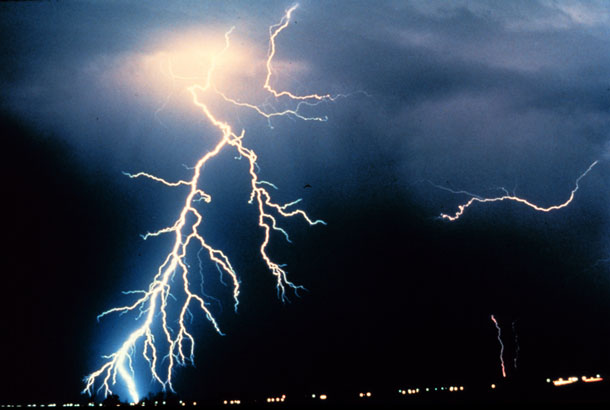
WASHINGTON – The danger from lightning is often ignored. Environment Canada reports, “Lightning flashes occur in Canada about 2.34 million times a year, including about once every three seconds during the summer months. In Canada, lightning strikes kill up to 10 people, seriously injure up to 164 others, and ignite some 4,000 forest fires.
Outdoors activity during a lightning storm can be very dangerous. Two activities that present real danger are fishing and golfing. Surprisingly, soccer also makes the top listing of dangers.
The weather service offers a lightning strike map. Visit www.weather.gc.ca/ to see the latest figures.
Lightning Strikes Kill 10 Canadians Annually
The National Oceanic and Atmospheric Administration (NOAA) National Weather Service in the United States has discovered that 64 percent of lightning deaths since 2006 occurred while people were participating in leisure activities, with fishing topping the list at 26 deaths.
John Jensenius, a lightning safety specialist with the National Weather Service, conducted the study by examining demographic information for 238 deaths attributed to lightning over the last seven years. NOAA released these findings on the first day of National Lightning Safety Awareness Week to call attention to the danger of outdoor activities during a thunderstorm.
Lightning Deaths – Fishing, Camping, Boating
Of the 152 deaths associated with leisure activities, fishing is followed by camping (15 deaths), boating (14 deaths), soccer (12 deaths) and golf (8 deaths).
The remaining 77 people were struck by lightning while participating in a number of other leisure activities like enjoying the beach, swimming, walking and running, riding recreational vehicles, and picnicking or relaxing in their yard.
Between 2006 and 2012, 82 percent of people killed by lightning were male.
“When people think of lightning deaths, they usually think of golf,” Jensenius said. “While every outdoor activity is dangerous when a thunderstorm is in the area, outdoor activities other than golf lead to more lightning deaths. NOAA has made a concerted effort to raise lightning awareness in the golf community since we began the campaign in 2001, and we believe our outreach has made a huge difference since lightning-related deaths on golf courses have decreased by 75 percent.”
Jensenius states that the large number of fishing, camping and boating lightning deaths may occur because these activities require extra time to get to a safe place.
“People often wait far too long to head to safety when a storm is approaching, and that puts them in a dangerous and potentially deadly situation,” he said.
Prior to the lightning safety campaign, lightning killed an average of 73 people each year in the United States. Since the National Weather Service launched the campaign, the average has dropped to 37.
Seven people have died from lightning strikes so far this year.
The best way for people to protect themselves against lightning injury or death is to monitor the weather and postpone or cancel outdoor activities when thunderstorms are in the forecast.
Lightning can strike from 10 miles away, so if people can hear thunder, they are in danger of being struck by lightning. The only safe places to be during a thunderstorm are in a building with four walls and a roof or in a car. A hut, cabana, tent, or other rain shelter will not protect a person from being struck by lightning.














